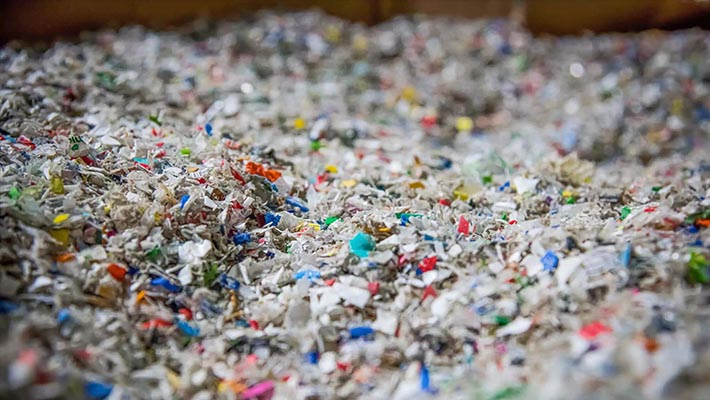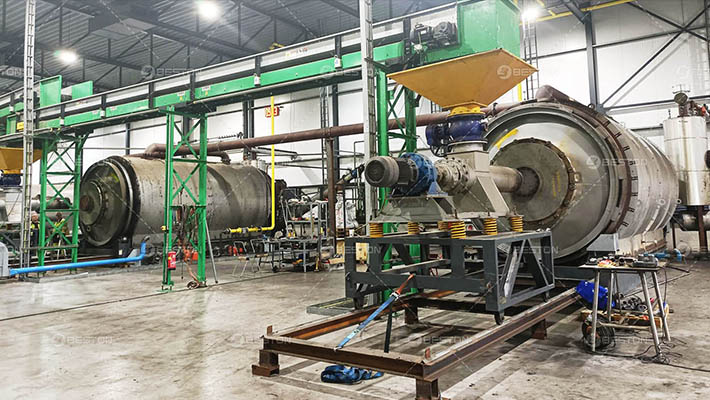In the realm of sustainable waste management, plastic pyrolysis stands out as a promising technology for converting plastic waste into valuable resources. However, not all plastic types are equally compatible with this process. While many polymers can undergo successful plastic pyrolysis, certain types, notably Polyvinyl Chloride (PVC) and Polyethylene Terephthalate (PET), pose challenges due to their chemical composition and properties. This article explores the plastic types suitable for plastic pyrolysis recycling, emphasizing alternatives to PVC and PET.
Polyolefins: Versatile Candidates for Plastic Pyrolysis Recycling
Polyolefins, including Polyethylene (PE) and Polypropylene (PP), emerge as prime candidates for plastic pyrolysis machine due to their chemical stability and high carbon content. These polymers consist solely of carbon and hydrogen atoms, devoid of the problematic chlorine in PVC or the oxygen-rich structure of PET. Consequently, they undergo efficient thermal decomposition in plastic pyrolysis machines, yielding valuable pyrolysis products such as gases and liquid fuels.
PE, characterized by its excellent flexibility and resistance to chemicals, finds extensive applications in packaging materials and consumer goods. When subjected to plastic pyrolysis, PE molecules break down into smaller hydrocarbon fragments, generating pyrolysis oil and gases like methane and ethylene. Likewise, PP, known for its robustness and heat resistance, undergoes smooth pyrolytic degradation, offering a sustainable pathway for recycling plastic waste.
Beyond the Basics: Exploring Advanced Plastic Types
While PE and PP dominate the landscape of plastic pyrolysis recycling, other plastic types exhibit potential for effective conversion in plastic pyrolysis machinery. For instance, Polyethylene Terephthalate Glycol-modified (PETG) represents a modified form of PET, engineered to enhance processability and thermal stability. Despite PET’s inherent challenges in pyrolysis, PETG demonstrates improved compatibility, opening avenues for its utilization in plastic recycling initiatives.
Similarly, Polystyrene (PS), renowned for its insulating properties and lightweight nature, presents opportunities for plastic pyrolysis. Although PS can produce styrene monomers during pyrolysis, strategic process adjustments and purification steps can mitigate these issues, ensuring the production of high-quality pyrolysis products. This highlights the importance of tailoring plastic pyrolysis parameters to the specific characteristics of different plastic types.
Navigating Challenges: Addressing Complex Plastic Structures
In the realm of plastic pyrolysis recycling, certain plastic types pose inherent challenges due to their complex chemical structures and degradation pathways. For instance, Polyamide (PA), commonly found in automotive components and industrial applications, features nitrogen atoms in its molecular chain. While PA exhibits high heat resistance and mechanical strength, its pyrolysis process may lead to the formation of nitrogenous compounds, necessitating precise control and optimization of plastic pyrolysis machine for sale.
Furthermore, the presence of additives and contaminants in plastic waste streams can influence the efficacy of plastic pyrolysis processes. Substances like pigments, fillers, and flame retardants may affect pyrolysis kinetics and product yields, necessitating thorough pre-treatment and sorting procedures to minimize their impact on recycling outcomes.
Future Perspectives: Advancing Plastic Pyrolysis Technologies
As the demand for sustainable waste management solutions continues to rise, ongoing research and development efforts are focused on advancing plastic pyrolysis technologies. Innovations such as catalytic pyrolysis and hydrothermal processing offer enhanced efficiency and product selectivity, enabling the conversion of a broader range of plastic types into valuable fuels and chemicals.
Moreover, integrated approaches combining plastic pyrolysis with other recycling techniques, such as mechanical recycling and chemical depolymerization, hold promise for achieving higher resource recovery rates and minimizing environmental footprints. By harnessing synergies between different recycling processes, stakeholders can optimize plastic waste valorization strategies and contribute to the transition towards a circular economy. If you want advanced plastic recycling equipment, Beston Group is a good manufacturer of pyrolysis machines.

Conclusion
In conclusion, while PVC and PET present challenges for plastic pyrolysis recycling due to their chemical compositions and properties, alternative plastic types offer viable solutions for sustainable waste management. Polyolefins like PE and PP emerge as versatile candidates for plastic pyrolysis, with their straightforward degradation pathways and high-quality pyrolysis products. Additionally, advanced plastic types such as PETG, PS, and PA demonstrate potential for effective conversion in plastic pyrolysis machines, albeit with specific considerations and process adjustments. By embracing innovation and collaboration, the plastic pyrolysis industry can pave the way for a greener, more circular approach to plastic waste management.